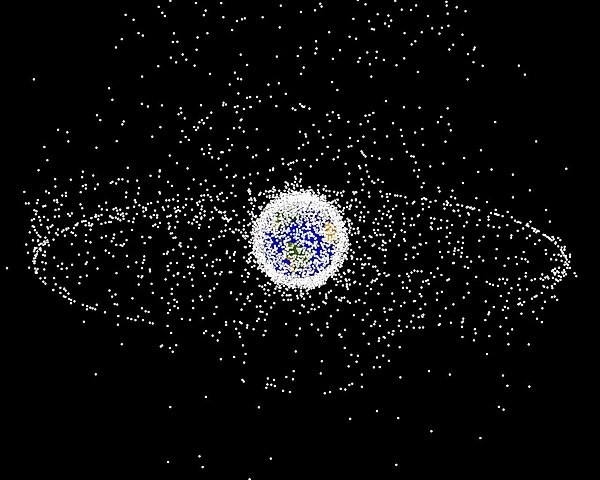
(Photo : Wikimedia Commons/NASA Orbital Debris Program Office, photo gallery)
Last month, a mysterious object smashed into Alejandro Otero's home in Florida. Over a month after the incident, NASA confirmed that the culprit was space junk.
Space Junk Smashed Into a Florida Home
NASA released a statement on Monday about the March 8 smashing incident in Florida. According to the U.S. Space Agency, the object was part of the International Space Station (ISS) hardware.
After the delivery and installation of new lithium-ion batteries as part of power upgrades on the orbital outpost, NASA ground controllers on the International Space Station deployed the station's robotic arm to release a cargo pallet holding aged nickel hydride batteries in March 2021. The entire mass of the hardware released from the space station was about 5,800 pounds. The hardware was anticipated to burn up when it ultimately entered Earth's atmosphere. Still, a piece of hardware made it through reentry and struck Otero's home in Naples, Florida.
In collaboration with the homeowner, NASA gathered and examined the object at the Kennedy Space Center in Florida. The agency evaluated the object's dimensions and attributes compared to the hardware made public as part of the analysis. After examining the debris, the agency concluded that it was a stanchion from the NASA flight support equipment utilized to install the batteries on the cargo pallet.
The object is 4 inches tall, 1.6 inches in diameter, and weighs 1.6 pounds. It is composed of the metal alloy Inconel.
The International Space Station will conduct a thorough investigation to determine why the debris survived the jettison and reentry examination. As necessary, it will also update its modeling and analysis.
NASA engineers use engineering models to predict how objects heat up and fragment during atmospheric reentry. When debris that has survived atmospheric reentry to the ground is discovered, these models, which require precise input parameters, are updated regularly.
Regarding releasing space gear, NASA is still dedicated to responsibly working in low Earth orbit and minimizing risk to the greatest extent possible to safeguard people on Earth.
Hello. Looks like one of those pieces missed Ft Myers and landed in my house in Naples.
Tore through the roof and went thru 2 floors. Almost his my son.
Can you please assist with getting NASA to connect with me? I’ve left messages and emails without a response. pic.twitter.com/Yi29f3EwyV— Alejandro Otero (@Alejandro0tero) March 15, 2024
ALSO READ: Max Space To Launch Stadium-Sized Habitats in Earth's Orbit in 2027 To Solve Lack of Space Rooms
Space Junk Problems
Thousands of satellites are deployed every year, leading to congestion in space. So, in September 2023, the U.S. Federal Aviation Administration (FAA) announced its intention to go into Earth's already congested orbit.
The government agency aimed to decrease the likelihood of spacecraft and satellite collisions and to promote a sustainable space environment by limiting the creation of new orbital debris.
Under the proposed regulations for commercial launch companies, the upper stage, or the portion of the rocket that ejects the cargo, would have five alternatives for removal.
- Conduct a controlled reentry;
- Move the upper stage to a less congested storage or graveyard orbit;
- Send the upper stage on an Earth-escape orbit;
- Retrieve the upper stage (called active debris removal) within five years or
- Perform an uncontrolled atmospheric disposal.
NASA also awarded TransAstara, a startup in space logistics, $850,000 for its "capture bags," which expand as they go into orbit and gather trash from space. Astroscale, a Japanese space corporation, is also innovating new ways to clean up the low Earth orbit. It plans to use its End of Life Services by Astroscale-Multiple (ELSA-M) spacecraft to intercept and deorbit defunct satellites.
RELATED ARTICLE: Will The Sun Explode 5 Billion Years From Now? Probably, Experts Say!
Check out more news and information on Space in Science Times.














